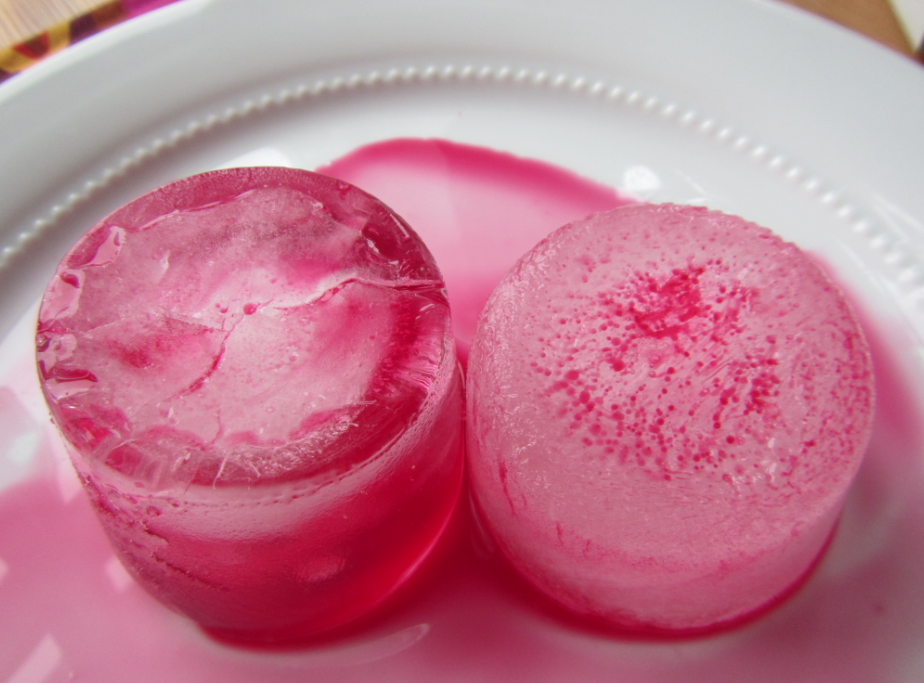Sea ice and fresh water ice have distinctly different properties that can easily be investigated even in big class rooms.
In “on how ice freezes from salt water” I talked a bit about how dye was rejected when I tried to produce colored ice cubes for another experiment. But even non-colored ice that were made out of fresh water or salt water shows distinctly different structures.

Ice formed from fresh water (on the left) and salt water (on the right). Note the small pores in the salt water ice cube – those are the channels that form when brine is rejected.
On the left, you see that the surface is very smooth apart from a couple of cracks. The red food dye that was dripped on the ice cube comes right off, like water off a duck’s back. On the right, the food coloring is not rolling off, instead it is creeping into all the little brine channels, hence nicely showing a web of pores all throughout the ice cube.
I first saw this experiment when Angelika Renner from the Norwegian Polar Institute in Tromsø visited my GEOF130 class last year. She says that she got the idea from the APECS book [link*], that, btw, provides many great ideas for outreach projects.
* I’m not affiliated, nor do I get money for recommending this book. It’s just a great resource that I think everybody should be aware of!
[edit 11.9.2013: new post on the same topic here: http://mirjamglessmer.com/2013/09/11/on-the-structure-of-fresh-water-and-salt-water-ice/]
Pingback: On the structure of fresh water and salt water ice |
Pingback: On the structure of fresh water and salt water ice – Mirjam S. Glessmer
Pingback: What’s #kitchenoceanography all about? | Dr. Mirjam S. Glessmer